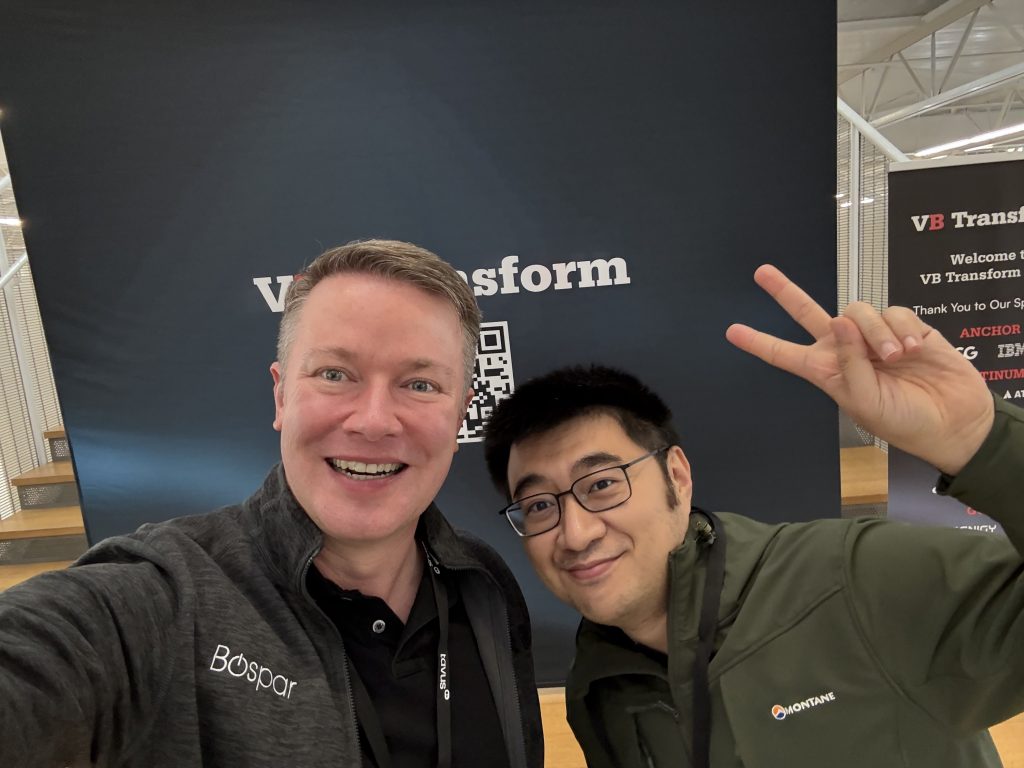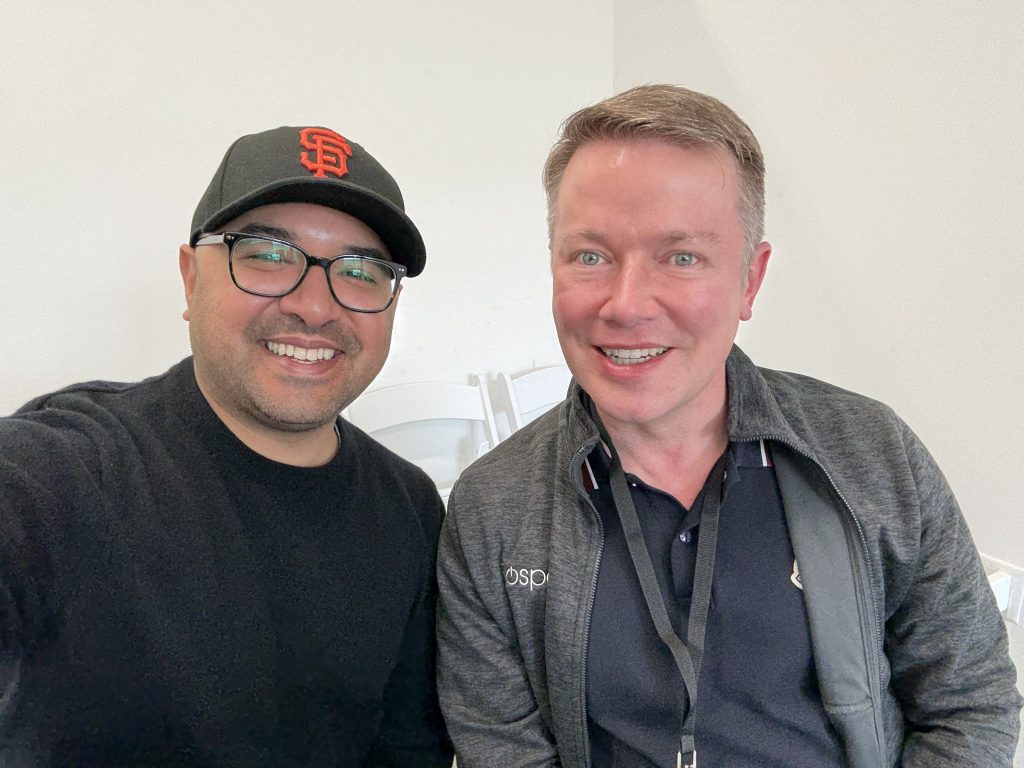VentureBeat’s Transform 2025: What Enterprise Leaders Really Need to Know About AI
VentureBeat’s Transform 2025’s speaker lineup was the kind that makes you question your life choices.
Let’s start with Andrew Ng, the Stanford professor who co-founded Coursera, led AI at Google and Baidu, and taught machine learning to millions.
Then there’s OpenAI’s Olivier Godement, LinkedIn’s Chief AI Officer Deepak Agarwal, American Express EVP & CTO Hilary Packer, and Bank of America’s Head of Data & AI Awais Sher Bajwa.

Woah.
Once you get over the mild career inadequacy, events like this offer something invaluable – especially when you can get behind the scenes with the journalists covering these leaders.
VentureBeat’s Executive Editor Carl Franzen and Editorial Director Michael Nunez spend their days interviewing the people inventing the AI future. They see which AI stories get buried and which ones break through. They know what makes executives stop scrolling and what makes reporters hit delete.
On day two of Transform 2025, I sat down with both of them for unfiltered conversations in the VIP lounge at Fort Mason in San Francisco – and naturally took some selfies too! What emerged was a clear picture of where AI implementation actually stands and what comes next.
The Agent Revolution is Here
“We came into this thinking it was gonna be a lot of conversation and questions about agents, AI agents. And I think that has borne out to be correct,” Carl Franzen observed. “Lots of our speakers and our attendees are interested in how these foundation models, these large language models can be applied to tasks beyond chat bots… discrete applications that are happening outside of the users’ direct interface. So you don’t have to supervise them or control them so closely.”

Franzen highlighted the emergence of parallel agent deployment: “A lot of what Windsurf has found to be very valuable to its customers, including JPMorgan Chase… is this ability to run multiple agents in parallel, to accomplish different tasks at the same time.”
The most common question isn’t “Should we use AI?” anymore, it’s “How do we deploy agents within our enterprise?” Companies are looking to automate entire business functions: employee onboarding, payroll processing, and all those necessary but mundane processes that keep businesses running.
Start Small, Think Big
Nunez mentioned his conversation with Scott White from Anthropic, who offered advice for building AI agents: “Start with the smallest possible detail, and then just start iterating from there. So you don’t go out and say, you know, I want to build a travel concierge that can book flights and hotels and rental cars and accepts all forms of payment and can also be linked to your mileage plus account.”
Nunez explained White’s approach: “Have two windows, one where you’re talking to the model about how to build what you want. So you can just ask Claude, how can I build a travel concierge using Claude code, and it will describe in detail the steps that you would take in order to use the model, then to build the actual application.”
The Experimentation Imperative
When I asked Nunez what he tells people about getting started with AI, he shared his consistent advice: “Just log in and start experimenting. See what these models are capable of for yourself… step one is to log into chatgpt.com, and ask it a question or log into Claude AI and ask it a question. Compare the differences in how they respond and then start to iterate on those questions.”
“You might start with something really simple. That’s a fact-based question. You know, what’s the capital of Utah? And you can move from that to really elaborate things like, you know, build me a world map that is, you know, 3D replica… with exact scaling,” Nunez explained.

“Everyone’s mind goes to a different place when you realize what’s possible with the new models. So whether it’s text based or image based or coding based, people are gonna think of different applications for each of these things.”
Don’t Wait for AGI—Build with What’s Available
“Even if you are a bull, optimistic on the case of AGI [artificial general intelligence], there’s so much that can be done with the current foundation models that we have barely even scratched the surface,” Franzen said. “Don’t hold up on deploying anything because you’re waiting for AGI to come and magically solve all your problems.”
Franzen highlighted practical applications available today: “I was talking to somebody yesterday about this Mistral OCR [optical character recognition] model… they have a model that takes and looks at PDFs and forms and tries to visually understand what’s happening there. So it’s not just scraping the text out. It’s understanding which boxes are checked.”
“Nobody really likes to think about or talk about forms. At least I don’t. But that’s exactly why it’s a perfect task for AI to take over,” he added.
Investment Strategy: People Over Technology

“Take that headcount budget and look at – even if we’re not going to carve it off into AI tools – let’s get some people who know how to use AI and are excited to use it and bring them in, because that’s gonna help the entire organization shift to that AI native mindset,” Franzen said.
When it comes to identifying AI expertise, Nunez emphasized asking the right questions: “What are you using? What tools are you using? What do you think about the latest release?” He noted that “those that know about Opus 4 and Sonnet 4… those are the ones that you should rush to hire.”
“It’s not that you have to have the right view. It’s just that you have to have a view for me,” Nunez explained.
Overcoming AI Hesitation
“Sometimes we see people with hesitation, with fear or with misgivings about AI, due to its training data, due to its environmental concerns,” Franzen observed. “But I would say, like, as if you’re a business person or in any field, if you work with anything that touches a computer, which increasingly almost everything does, you should be trying to use AI.”
Franzen used a power tool analogy: “The founder of, or the creator of, Quake, John Carmack had a great piece… he said, AI is like a power tool… like computers were like a hammer or like a saw. And then AI is like a power drill, or a chainsaw… you can decide to forego power tools, but somebody that uses power tools is going to be able to accomplish a lot more.”
“As a writer, as somebody whose work was undoubtedly scraped to train these models without my consent, without my permission… I understand that the anger and the fear,” Franzen said. “But at the same time, these tools are there. They’re not going away.”
Media and Communication Strategy
“We’re writing for a very specific audience… enterprise technical decision makers,” Franzen explained. “The more that you can position whatever it is your vendor tool is… as how does this solve a problem for people in large medium to large enterprises, the more likely we are going to be able to listen to that pitch.”
Nunez’s advice on pitching focused on impact: “Really focus on the impact… we tend to sort of validate and invalidate articles based on how many people it’s gonna impact… The answer to like, why should I give a shit about this news is kind of the question that all editors and reporters are asking.”
“At one point in time, raising 10 million bucks would have gotten you a nice article in a lot of different publications. I think in 2025, I don’t see that story really getting written in many places,” Nunez noted.

Looking Toward Transform 2026
“If this year is the year of AI agents, I would expect by next year the year to be AI workflows,” Franzen predicted. “How are we actually going to work with AI? What are we accomplishing on the back end? And like, how much human intervention or guidance… what’s the right way, basically, for humans and AI to work together.”
Nunez’s prediction was more concrete: “This year’s Transform is defined by talking about AI agents. Next year, I predict we’ll see them deployed at scale. Fortune 500 companies will have clear success stories, and we’ll witness young founders running multimillion-dollar businesses with AI agents as their staff.”